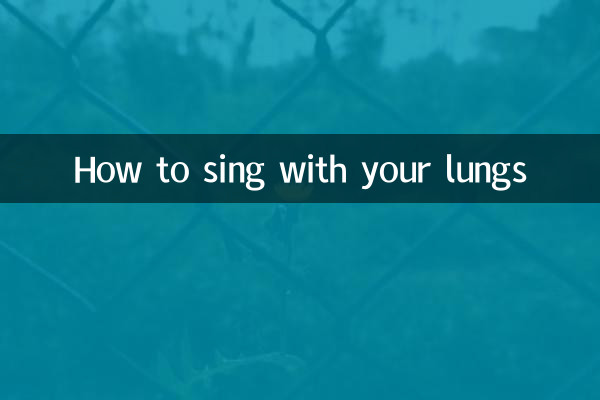How to Sing with Your Lungs: Techniques and Science Explained
In recent years, with the rise of music variety shows and short video platforms, more and more people have begun to pay attention to singing skills. Among them, the topic of "singing with your lungs" has triggered widespread discussion. This article will combine the hot topics and hot content on the Internet in the past 10 days to analyze for you how to scientifically use lung power to improve singing performance.
1. The relationship between popular topics on the Internet and lung singing

Recently, the following topics have been closely related to "Lungs Singing". The following is a summary of the data:
| hot topics | Relevance | focus of discussion |
|---|---|---|
| abdominal breathing | high | How to control breath through the abdomen and lungs together |
| Vocal training techniques | in | Scientific analysis of the relationship between lung strength and timbre |
| healthy singing | high | Avoid excessive use of the voice and make proper use of lung support |
2. The core principle of lung singing
The essence of singing with your lungs is to adjust the intensity, stability and timbre of your voice by controlling your breathing. Here are the key steps:
1.abdominal breathing training: When you inhale, let your abdomen swell, and when you exhale, slowly contract it to ensure that your lungs are fully inflated.
2.breath support: When singing, keep your abdomen slightly stressed to avoid losing breath too quickly.
3.Diaphragm control: Adjust the airflow through the sinking and rising of the diaphragm to achieve changes in the intensity of the sound.
3. Comparison of practice methods and data
The following is a comparison of the effects of two common practice methods:
| Practice method | Applicable people | Effective time |
|---|---|---|
| Slow inhale and exhale slowly | Beginner | 2-4 weeks |
| rapid exhalation method | Advanced | 1-2 weeks |
4. Common misunderstandings and scientific suggestions
1.Myth 1: Inhaling forcefully equals lung support: Excessive inhalation will cause muscle tension, which will affect vocalization.
2.Myth 2: The stronger the lungs, the better: The breath intensity should be adjusted according to the needs of the song to avoid stiffness of the sound.
3.scientific advice: Combined with the guidance of the vocal teacher, conduct regular breathing training.
5. Summary
Singing with the lungs is an important part of singing technology and needs to be mastered through scientific breathing control and long-term practice. The recent popular topics of abdominal breathing and healthy singing also confirm this. I hope the structured analysis in this article can help you better understand and apply this technique.

check the details

check the details